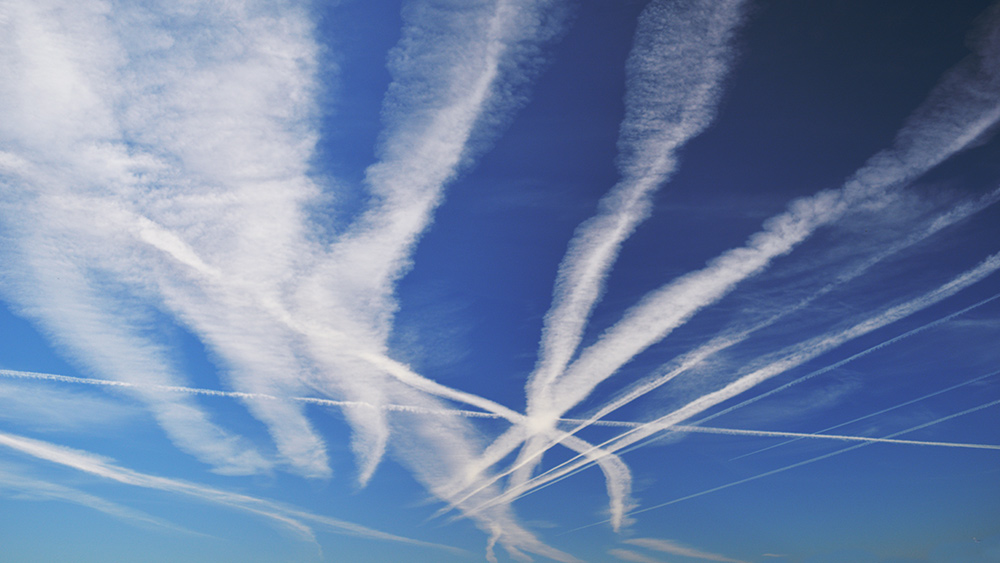Solar researcher warns of solar activity decrease, imminent MINI ICE AGE and GLOBAL FAMINE by 2030
10/06/2023 / By Belle Carter

A Ukrainian solar researcher with a solid academic background has been warning about a dangerous phenomenon that could lead to dramatic climate and weather changes as well as global cooling for years now. Her studies have become controversial over the years because she blames climate changes on the sun’s activity and not anything carbon dioxide-related.
In a 2019 interview with the award-winning Canadian journalist Stuart McNish on his program “Conversations That Matter,” Valentina Zharkova, who authored world-leading research as well as numerous groundbreaking publications, explained that they have been observing signs that since 2015, solar activity has been decreasing in a manner only seen during the Grand Solar Minimum, which last occurred during the Maunder Minimum, also known as the “prolonged sunspot minimum,” 400 years ago.
She cited National Oceanic and Atmospheric Administration (NOAA), National Aeronautics and Space Administration (NASA), and other research organizations have noted this trend in various ways but hid the information from the public. According to her, the significantly reduced solar activity will inevitably lead to dramatic climate and weather changes such as a massive global cooling that could be likened to a mini ice age. (Related: NO WARMING AT ALL: Global COOLING continues for eighth straight year, according to NOAA data.)
“Between cycle 25 and 11 years of cycle 26 [the least active cycle], and between cycle 26 and 27, will be the coldest period on Earth, and we will feel it through a lack of vegetation,” the researcher and lecturer with a doctorate in astrophysics said. This means that starting after the active period during the ‘Solar Cycle 25,’ from the second half of this decade until the early 2050s, Earth will experience exceptional cold, extreme weather, earthquakes, and volcanic eruptions. Zharkova pointed to 2030 as the year when it will seriously begin, warning that the 2030s will be so cold that it will result in a severe food shortage.
Back in 1998, the climate expert published her discovery that solar flares were triggered by solar quakes after extensive research. Solar flares are intense localized eruptions of electromagnetic radiation in the sun’s atmosphere. She has also published over 200 articles, including three articles in Nature-affiliated journals. It was one of these articles that predicted the modern Grand Solar Minimum, which she believes will affect the Earth between 2020 and 2053.
Zharkova used a mathematical program to get her findings which has produced 97 percent accuracy over the last 30 years in mapping the movement of sunspots. Sunspots are cooler regions of the sun’s surface that move around periodically and appear darker when photographed. We say cooler, but really these sunspots still maintain incredible temperatures of around 4,200 degrees Celsius.
FreeWestMedia pointed out how, interestingly, 2020 was also the year when the alleged Wuhan coronavirus (COVID-19) pandemic was used to implement extensive lockdowns and the introduction of the “New Normal, ” which several countries have since made permanent, with the explanation that the world will never be the same again. She also wrote a monograph on particle kinetics, which served as an editor for a book on automated recognition and classification of digital images, and wrote the Reuven Ramaty High Energy Solar Spectroscopic Imager (RHESSI) book on high-energy particles. The independent news outlet raised people’s concern about the globalists’ Agenda 2030 and claims of “human-induced global warming,” which are supposed to affect us in the early 2030s.
“The question is why they are not warning us about what is truly on the horizon, as they are likely well aware of it. Even more concerning is why they are misleading the world’s governments and people into believing that the threat is warmth. Potential answers to these questions are unsettling,” the article read.
Record number of sunspots observed in June
Back in June, a record number of spots on the sun’s surface was observed that has caused worry for solar scientists, as Zharkova has been warning. The center of the solar system is defying predictions and heading into a much stronger solar cycle, which could impact Earth.
HIGHEST MONTHLY AVERAGED SUNSPOT NUMBER SINCE SEPTEMBER 2002! The June 2023 SNN was 163.4 the highest value for over 20 years. The CM model is now forecasting a peak for SC25 of just under 200, the CM model at 125 (SC42 was 116). Any Grand Solar Minimum believers left out there? pic.twitter.com/uw0JCeooe1
— Keith Strong (@drkstrong) July 1, 2023
Sunspots are areas of high-intensity magnetic fields on the solar surface that result in a temporary halting of the convection process. This results in a drop in the temperature in the localized region, making them appear darker than the rest of the solar surface. These regions are associated with solar flares, intense eruptions of electromagnetic radiation, and coronal mass ejections (CMEs), which send out plasma particles from the sun’s corona into space.
The giant sunspot named AR3354 was first spotted on the sun on June 27 and grew rapidly within a span of two days to a size about 10 times larger than Earth, raising concerns among space weather scientists. In July, it let out an X1 class solar flare, and the resultant radiation caused a deep shortwave radio blackout over the Pacific Ocean and the western parts of the United States. Class X is the most intense of solar flares, and the solar storms accompanying such events can impact life on Earth. Extreme energy events can disrupt electrical grids as well as damage spacecraft.
Visit ClimateScienceNews.com for more stories related to global cooling and how global warming is a scam.
Sources for this article include:
Submit a correction >>
Tagged Under:
Agenda 2030, Censored Science, Climate, climate science, cosmic, Ecology, environment, extreme weather, famine, food collapse, food shortage, food supply, Global Cooling, global warming, Grand Solar Minimum, hunger, rationing, research, scarcity, solar activity, Space, starvation, suppressed, Valentina Zharkova, weather terrorism
This article may contain statements that reflect the opinion of the author
RECENT NEWS & ARTICLES
COPYRIGHT © 2017 CLIMATE SCIENCE NEWS
















